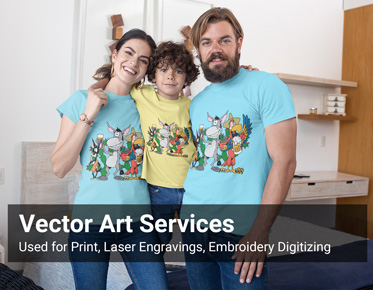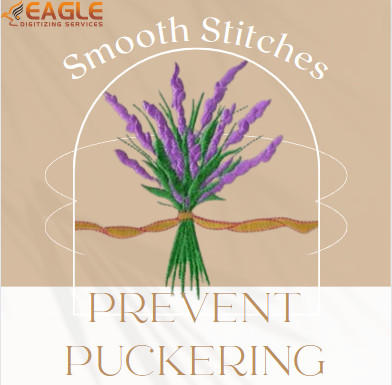Solving Common Font Issues in Raster to Vector Conversion
Font conversion from raster to vector is a crucial task in digital design, enabling scalability and versatility. However, it comes with its share of challenges. In this article, we'll explore common font issues encountered during raster to vectorconversion.
Definition
of raster fonts
Raster fonts, also known as bitmap fonts, are comprised of pixel-based representations of characters. Each character is defined by a grid of pixels, making raster fonts resolution-dependent. Unlike vector fonts, which use mathematical equations to define shapes, raster fonts are essentially images of characters.
Characteristics
of raster fonts
Raster fonts lack scalability, as they are defined by a fixed grid of pixels. When scaled up or down, raster fonts can lose detail and appear pixelated, impacting their clarity and quality. They are commonly used in digital displays, such as computer screens and printers.
Common
issues with raster fonts in conversion
During raster to vector conversion, raster fonts may suffer from loss of detail, resulting in blurry or distorted characters. Additionally, their fixed grid structure can lead to inaccuracies in stroke widths and shapes. Complex or decorative fonts can pose particular challenges, as their intricate details may not translate well into vector format.
Definition
of vector fonts
Vector fonts are defined by mathematical equations that describe the shapes and outlines of characters. Unlike raster fonts, which are comprised of pixels, vector fonts are resolution-independent. This means that they can be scaled infinitely without losing quality.
Advantages
of vector fonts
Vector fonts offer crisp and clear output at any size, making them ideal for high-quality printing and digital design. They maintain sharpness and clarity regardless of scaling, ensuring consistent visual impact. Additionally, vector fonts are editable, allowing designers to easily modify individual characters or entire font sets.
Compatibility
with different software and devices
Vector fonts are widely compatible with various software applications and devices, including graphic design software and printers. They can be easily edited and manipulated without sacrificing quality. This makes them versatile for a range of design projects, from logos and illustrations to web graphics and signage.
Loss of
detail and clarity
One of the most common issues in raster to vector conversion is the loss of detail and clarity. As raster fonts are made up of pixels, they may lose sharpness and definition when converted to vector format, especially when scaled to larger sizes.
Inaccurate
stroke widths and shapes
Raster to vector conversion can lead to inaccuracies in stroke widths and shapes, resulting in uneven or distorted characters. This issue can affect the overall visual consistency and readability of the text.
Misinterpretation
of letterforms
Complex or decorative letterforms may be misinterpreted during conversion, resulting in inaccuracies or distortions in the vector output. This can lead to discrepancies between the original raster font and the vectorized version, affecting the overall aesthetic of the text.
Distortion
of font proportions
Raster to vector conversion may inadvertently distort the proportions of fonts, resulting in stretched or compressed characters. This distortion can affect the overall balance and harmony of the text, making it appear uneven or disjointed.
Handling
of special characters and ligatures
Special characters, ligatures, and diacritical marks may not be properly recognized or preserved during conversion, resulting in missing or incorrectly rendered elements. This can lead to errors and inconsistencies in the vector output, impacting the accuracy and readability of the text.
Challenges
with font kerning and spacing
Kerning, tracking, and spacing adjustments applied to raster fonts may not translate accurately to vector format, resulting in uneven spacing and awkward letter arrangements. This can affect the visual flow and readability of the text, making it appear disjointed or difficult to read.
Using
high-resolution source images
Starting with high-resolution raster images can help preserve detail and clarity during conversion, minimizing the loss of fidelity in the final vector output. High-resolution images provide more information for the conversion software to work with, resulting in a more accurate vector representation of the font.
Manual
tracing and editing
Manual tracing and editing techniques can be employed to refine and correct font shapes and details, ensuring accuracy and consistency in the vector conversion process. While this method can be time-consuming, it allows for precise control over the conversion and can yield high-quality results, especially for complex or decorative fonts.
Adjusting
conversion settings and parameters
Many raster to vector art conversion tools offer customizable settings and parameters that allow users to adjust the conversion process to achieve optimal results for different font types and styles. Experimenting with different settings, such as threshold levels and smoothing options, can help improve the accuracy and quality of the vector output.
Utilizing
specialized software tools and plugins
Dedicated vectorization software and plugins offer advanced features and algorithms specifically designed to address font conversion challenges, providing more accurate and efficient results. These tools often include options for fine-tuning the conversion process and optimizing the output for different font styles and complexities.
Leveraging
font recognition technology
Font recognition technology can assist in identifying and matching raster fonts to their vector counterparts, facilitating more accurate and automated conversion processes. By analyzing the shapes and characteristics of the raster font, font recognition algorithms can generate vector outlines that closely resemble the original font, reducing the need for manual intervention.
Choosing
appropriate conversion methods
Different conversion methods, such as automatic tracing, manual tracing, and hybrid approaches, may yield varying results depending on the complexity of the font and the desired level of accuracy. Experimenting with different methods and techniques can help determine the most suitable approach for preserving font integrity.
Ensuring
consistency across characters and glyphs
Maintaining consistency in stroke widths, shapes, and proportions across characters and glyphs is essential for preserving font integrity and readability in the vector output. Paying attention to small details and making adjustments as needed can help ensure a cohesive and visually pleasing result.
Verifying
font accuracy through comparison
Comparing the vectorized output with the original raster image and source font files can help identify discrepancies and errors that may require manual correction or adjustment. This step is particularly important for ensuring the accuracy and fidelity of the vector output, especially when working with complex or decorative fonts.
Collaborating
with typography experts
Seeking input and guidance from typography experts can provide valuable insights and recommendations for resolving font issues and optimizing the conversion process for specific font styles and designs. Typography experts can offer expert advice on font selection, conversion techniques, and best practices for preserving font integrity, helping to achieve the desired outcome with precision and professionalism.
Organizing
font libraries for easy access
Maintaining a well-organized font library with clear naming conventions and categorization can streamline font selection and management tasks, improving efficiency and productivity. Organizing fonts by style, usage, or project can make it easier to find and access the right font for each design project.
Updating
and maintaining font files regularly
Regularly updating font files and software applications helps ensure compatibility and reliability, minimizing the risk of font-related issues and errors in the conversion process. Keeping fonts up to date with the latest versions and patches ensures optimal performance and compatibility with other software and devices.
Documenting
font usage and preferences
Keeping detailed records of font usage, preferences, and conversion settings can facilitate collaboration and communication among team members, enabling consistent and cohesive design outcomes. Documenting font usage can also help track licensing and usage rights, ensuring compliance with copyright laws and licensing agreements.
In conclusion, font issues in raster to vector
conversion present challenges for designers, but with the right strategies and
techniques, these challenges can be overcome. By understanding the characteristics
of raster and vector fonts and employing best practices for font management,
designers can achieve superior results and elevate the impact of their design
work. With careful attention to detail and collaboration with typography
experts, font conversion challenges can be addressed effectively, ensuring
high-quality outcomes in digital design projects. Eagle Digitizing provides vector conversion services to support designers in
overcoming these challenges and achieving optimal results.



